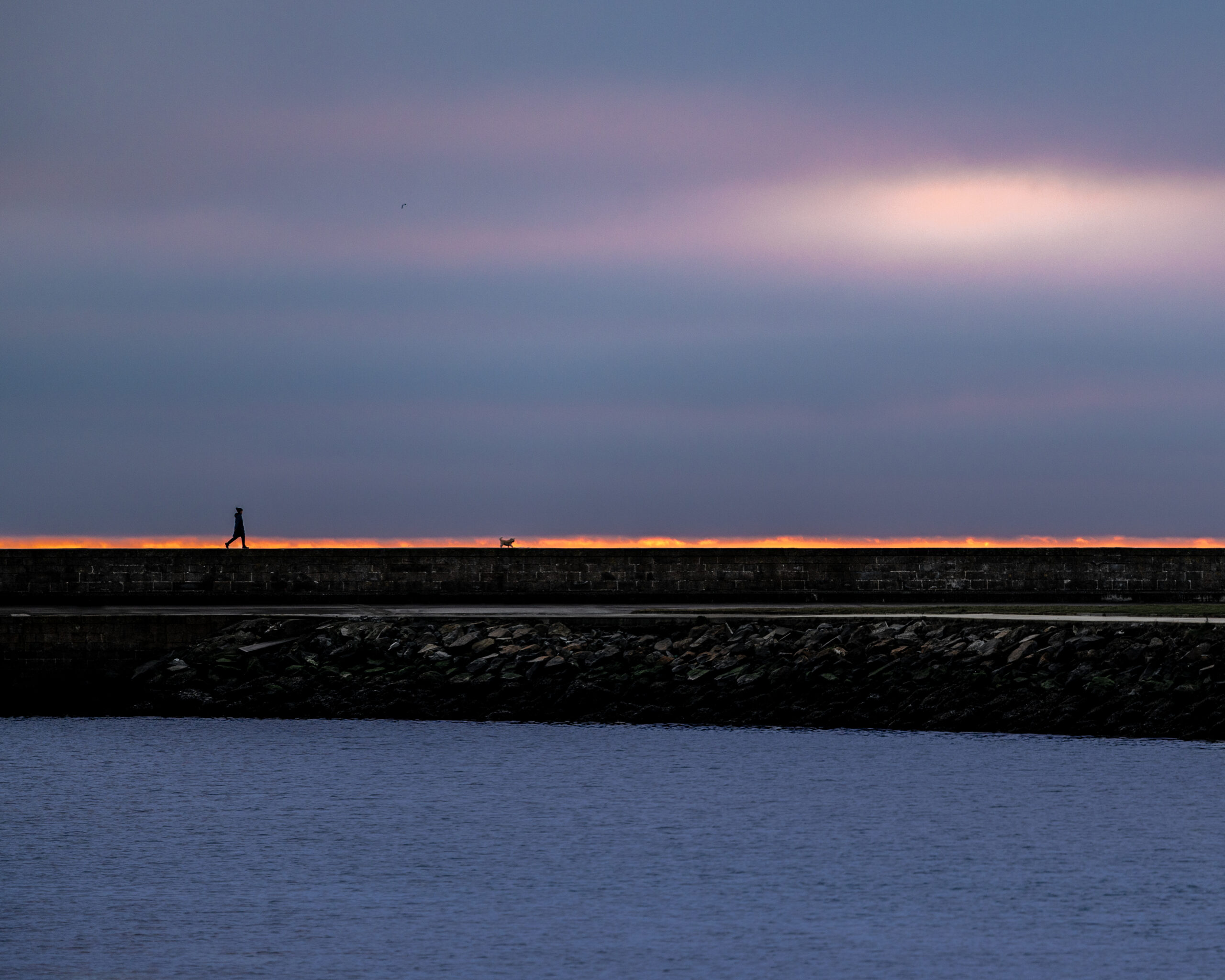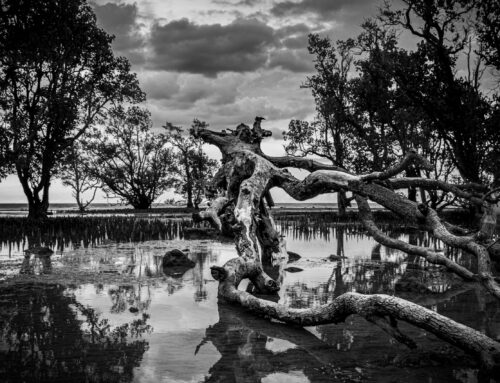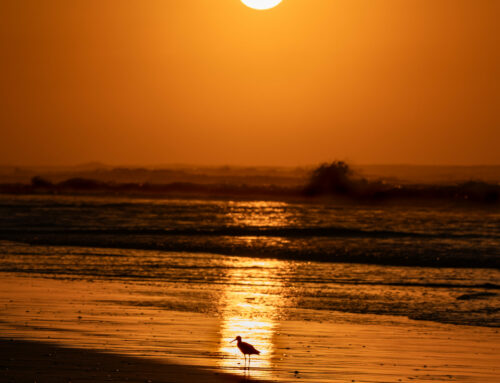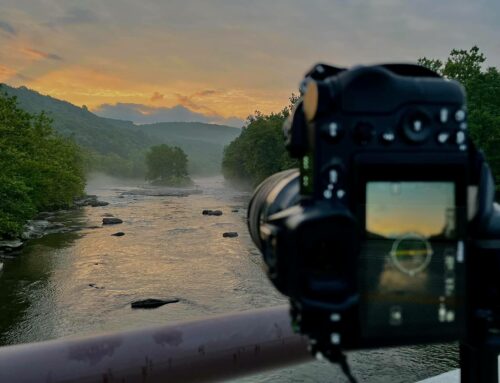During a recent trip to Ireland, I decided to explore a small island just east of Dublin called Howth (pronounced “Hoath”). I virtually scouted the location (using the Photographer’s Ephemeris & Google Street View) to plan the day trip.
It rained for a couple of days before, leaving a thick cloud cover. I had hoped the clouds would make for an interesting sunrise, but it didn’t pan out that way. The cloud ceiling was very low, and as the sun rose, you could only see a thin line of orange on the horizon with dark blue and purplish clouds blocking all other sunlight.
As is often the case on a photo trek, the subject I thought I would be photographing wasn’t the best shot. I had planned to capture a hillside rising above the sea on the other side of the bay, but after an initial look upon arrival, I knew that was never going to be the shot. However, as that thin line of orange horizon grew brighter, I saw a lady walking with her dog on top of the sea wall with the open ocean on the other side and about to walk right into my camera’s field of view.
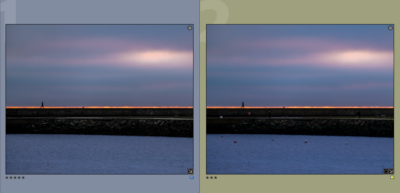
After & Before the Edit
It ended up being the best composition of the day; but it still had its problems. There were all sorts of detritus creating distractions throughout the image—other people walking on a lower sidewalk, crab pot buoys floating in the water, an odd life vest hanging on a pole, and a random white box sitting on the sidewalk. So, using Adobe Lightroom and Photoshop, I carefully removed all these tiny distractions. This brings up an important question: how far is too far when editing photographs?
Photographers have been editing their photos since the earliest days of the art. In the darkroom, we would used techniques like dodging and burning to manually edit their photos. Ansel Adams, a master of darkroom techniques, famously said,
“Dodging and burning are steps to take care of mistakes God made in establishing tonal relationships.” [1]
As long as a photographer is transparent about their artistic process, who are we to discourage them from executing their art? Photography is not just about capturing reality; it’s about conveying an artistic vision. Editing is a tool that helps bring that vision to life, allowing photographers to present their work as they envision it. In the end, the artistic integrity of a photo lies in the honesty of the photographer about their methods and intentions.
